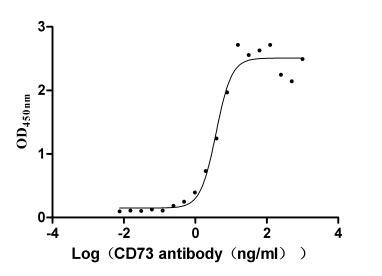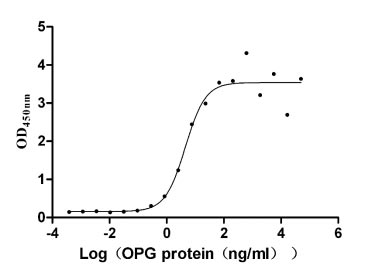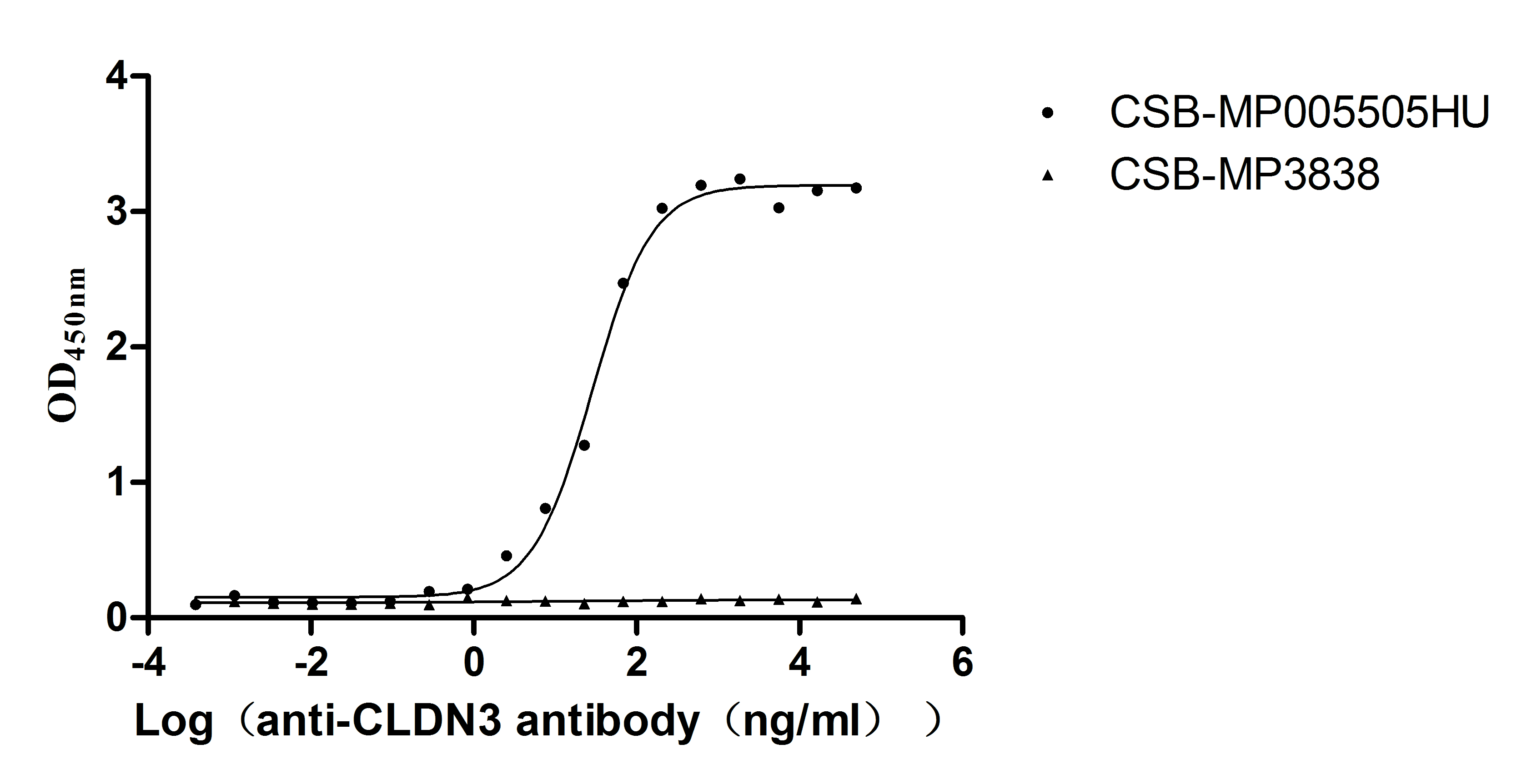Recombinant Rat Neuronal calcium sensor 1 (Ncs1)
-
中文名稱:大鼠Ncs1重組蛋白
-
貨號(hào):CSB-YP008983RA
-
規(guī)格:
-
來(lái)源:Yeast
-
其他:
-
中文名稱:大鼠Ncs1重組蛋白
-
貨號(hào):CSB-EP008983RA
-
規(guī)格:
-
來(lái)源:E.coli
-
其他:
-
中文名稱:大鼠Ncs1重組蛋白
-
貨號(hào):CSB-EP008983RA-B
-
規(guī)格:
-
來(lái)源:E.coli
-
共軛:Avi-tag Biotinylated
E. coli biotin ligase (BirA) is highly specific in covalently attaching biotin to the 15 amino acid AviTag peptide. This recombinant protein was biotinylated in vivo by AviTag-BirA technology, which method is BriA catalyzes amide linkage between the biotin and the specific lysine of the AviTag.
-
其他:
-
中文名稱:大鼠Ncs1重組蛋白
-
貨號(hào):CSB-BP008983RA
-
規(guī)格:
-
來(lái)源:Baculovirus
-
其他:
-
中文名稱:大鼠Ncs1重組蛋白
-
貨號(hào):CSB-MP008983RA
-
規(guī)格:
-
來(lái)源:Mammalian cell
-
其他:
產(chǎn)品詳情
-
純度:>85% (SDS-PAGE)
-
基因名:Ncs1
-
Uniprot No.:
-
別名:Ncs1; Flup; Freq; Neuronal calcium sensor 1; NCS-1; Frequenin homolog; Frequenin-like protein; Frequenin-like ubiquitous protein
-
種屬:Rattus norvegicus (Rat)
-
蛋白長(zhǎng)度:Full Length of Mature Protein
-
表達(dá)區(qū)域:2-190
-
氨基酸序列GKSNSKLKP EVVEELTRKT YFTEKEVQQW YKGFIKDCPS GQLDAAGFQK IYKQFFPFGD PTKFATFVFN VFDENKDGRI EFSEFIQALS VTSRGTLDEK LRWAFKLYDL DNDGYITRNE MLDIVDAIYQ MVGNTVELPE EENTPEKRVD RIFAMMDKNA DGKLTLQEFQ EGSKADPSIV QALSLYDGLV
-
蛋白標(biāo)簽:Tag?type?will?be?determined?during?the?manufacturing?process.
The tag type will be determined during production process. If you have specified tag type, please tell us and we will develop the specified tag preferentially. -
產(chǎn)品提供形式:Lyophilized powder
Note: We will preferentially ship the format that we have in stock, however, if you have any special requirement for the format, please remark your requirement when placing the order, we will prepare according to your demand. -
復(fù)溶:We recommend that this vial be briefly centrifuged prior to opening to bring the contents to the bottom. Please reconstitute protein in deionized sterile water to a concentration of 0.1-1.0 mg/mL.We recommend to add 5-50% of glycerol (final concentration) and aliquot for long-term storage at -20℃/-80℃. Our default final concentration of glycerol is 50%. Customers could use it as reference.
-
儲(chǔ)存條件:Store at -20°C/-80°C upon receipt, aliquoting is necessary for mutiple use. Avoid repeated freeze-thaw cycles.
-
保質(zhì)期:The shelf life is related to many factors, storage state, buffer ingredients, storage temperature and the stability of the protein itself.
Generally, the shelf life of liquid form is 6 months at -20°C/-80°C. The shelf life of lyophilized form is 12 months at -20°C/-80°C. -
貨期:Delivery time may differ from different purchasing way or location, please kindly consult your local distributors for specific delivery time.Note: All of our proteins are default shipped with normal blue ice packs, if you request to ship with dry ice, please communicate with us in advance and extra fees will be charged.
-
注意事項(xiàng):Repeated freezing and thawing is not recommended. Store working aliquots at 4°C for up to one week.
-
Datasheet :Please contact us to get it.
靶點(diǎn)詳情
-
功能:Neuronal calcium sensor, regulator of G protein-coupled receptor phosphorylation in a calcium dependent manner. Directly regulates GRK1 (RHOK), but not GRK2 to GRK5. Can substitute for calmodulin. Stimulates PI4KB kinase activity. Involved in long-term synaptic plasticity through its interaction with PICK1. May also play a role in neuron differentiation through inhibition of the activity of N-type voltage-gated calcium channel.
-
基因功能參考文獻(xiàn):
- three critical amino acid residues of N. crassa NCS-1 and its functional conservation across species using the orthologue from R. norvegicus PMID: 27796528
- In the Ca(2+)/NCS-1.D2R peptide complex, the C-terminal region adopts a 310 helix-turn-310 helix, whereas in the GRK1 peptide complex it forms an a-helix PMID: 25979333
- NCS-1 was decreased in prefrontal cortex 48 hours after sepsis induction PMID: 24978930
- physical exercise could be modulating NCS-1 in an activity dependent manner, for specific neural substrates PMID: 22521426
- characterized individual residues in both non-myristoylated and myristoylated NCS-1 that access alternate states by measuring nonlinear temperature dependence of the backbone amide-proton ((1)H(N)) chemical shifts PMID: 21035569
- findings demonstrate that increasing the levels of intracellular NCS1 in injured and uninjured central neurons enhances their intrinsic anatomical plasticity within the injured adult central nervous system PMID: 20585375
- Data show that overexpression of NCS-1 in PC12 cells induces an enhancement of intracellular second messenger and transmitter release dependent on CCH response, suggesting that muscarinic signaling is "up-regulated" in this cell model. PMID: 19656467
- The expression level of NCS-1 in cerebral cortex is the highest.NCS-1 in human brain might be involved in a variety of brain functions such as sensory processing, motor control, emotional control, learning and memory. PMID: 11825672
- NCS-1 enhances exocytosis of secretory organelles in PC12 cells; NCS-1 interacts with putative targets on the plasma membrane and on secretory vesicles. PMID: 12006624
- The selective loss of NCS-1 during colitis may underlie the altered neural function seen in the inflamed intestine. PMID: 12016136
- mechanisms underlying the neuronal calcium sensor-1-evoked enhancement of exocytosis in PC12 cells PMID: 12034721
- This protein and 1-phosphatidylinositol 4-kinase interact in neuronal cells and are translocated to membranes during exocytosis. PMID: 12244129
- Phosphatidylinositol 4-OH kinase is a downstream target of this protein in enhancing exocytosis in neuroendocrine cells PMID: 12471042
- The results suggest that NCS-1 is involved in axogenesis and synaptogenesis in the developing rat spinal cord. NCS-1 can serve as a Ca(2+)-sensor not only in neurons but also in radial glial cells in the adult rat spinal cord. PMID: 12717707
- Increases in the calcium binding protein neuronal calcium sensor-1 (NCS-1) can switch paired-pulse depression to facilitation without altering basal synaptic transmission or initial neurotransmitter release probability. PMID: 12947410
- NCS-1 is involved in the control of regulated exocytosis in nonneural cells, where it contributes to stimulus-secretion coupling by interacting with phosphatidylinositol 4-kinase beta (PI4Kbeta)and positive regulation of its activity. PMID: 14607934
- These results support the idea that NCS-1 facilitates nerve ending neurotransmitter release and phosphoinositide production via PI-4 Kinase and localizes these effects to the N-terminal of NCS-1. PMID: 15659215
- The results of this study suggest that NCS-1 is involved in the formation and function of presynaptic nerve terminal part of the neuromuscular junction during synaptogenesis and in adult mammals. PMID: 16088942
- The data suggest protein-protein interaction between NCS-1 and TRPC5, and involvement of this protein complex in retardation of neurite outgrowth. PMID: 16469785
- NCS-1 is a novel survival-promoting factor up-regulated in injured neurons that mediates the GDNF survival signal via the phosphatidylinositol 3-kinase-Akt pathway. PMID: 16549499
- functional implication of a NCS-1.PI4K-beta complex in regulated exocytosis in neurons PMID: 16638749
- results indicated that chronic electroconvulsive stimulation increased the expression of NCS-1 only in cerebellum PMID: 17160505
- This study demonstrates the importance of Mg(2+) as a modulator of calcium homeostasis and active-state behavior of NCS-1. PMID: 18199453
- These data demonstrate a role for NCS-1 and dopamine type-2 receptor in dentate gyrus (DG) plasticity and provide insight for understanding how the DG contributes to the origin of exploration and spatial memory acquisition PMID: 19755107
顯示更多
收起更多
-
亞細(xì)胞定位:Golgi apparatus. Cell junction, synapse, postsynaptic density. Cytoplasm, perinuclear region. Cytoplasm. Cell membrane. Membrane; Lipid-anchor.
-
蛋白家族:Recoverin family
-
數(shù)據(jù)庫(kù)鏈接:
Most popular with customers
-
Recombinant Human 5'-nucleotidase (NT5E) (Active)
Express system: Mammalian cell
Species: Homo sapiens (Human)
-
Recombinant Human Tumor necrosis factor receptor superfamily member 11B (TNFRSF11B) (Active)
Express system: Mammalian cell
Species: Homo sapiens (Human)
-
Recombinant Human Dickkopf-related protein 1 (DKK1) (Active)
Express system: Mammalian cell
Species: Homo sapiens (Human)
-
Recombinant Human Claudin-3 (CLDN3)-VLPs (Active)
Express system: Mammalian cell
Species: Homo sapiens (Human)
-
Recombinant Human Transferrin receptor protein 1 (TFRC), partial (Active)
Express system: Mammalian cell
Species: Homo sapiens (Human)
-
Recombinant Human Killer cell immunoglobulin-like receptor 3DL2 (KIR3DL2), partial (Active)
Express system: Mammalian cell
Species: Homo sapiens (Human)




-AC1.jpg)












